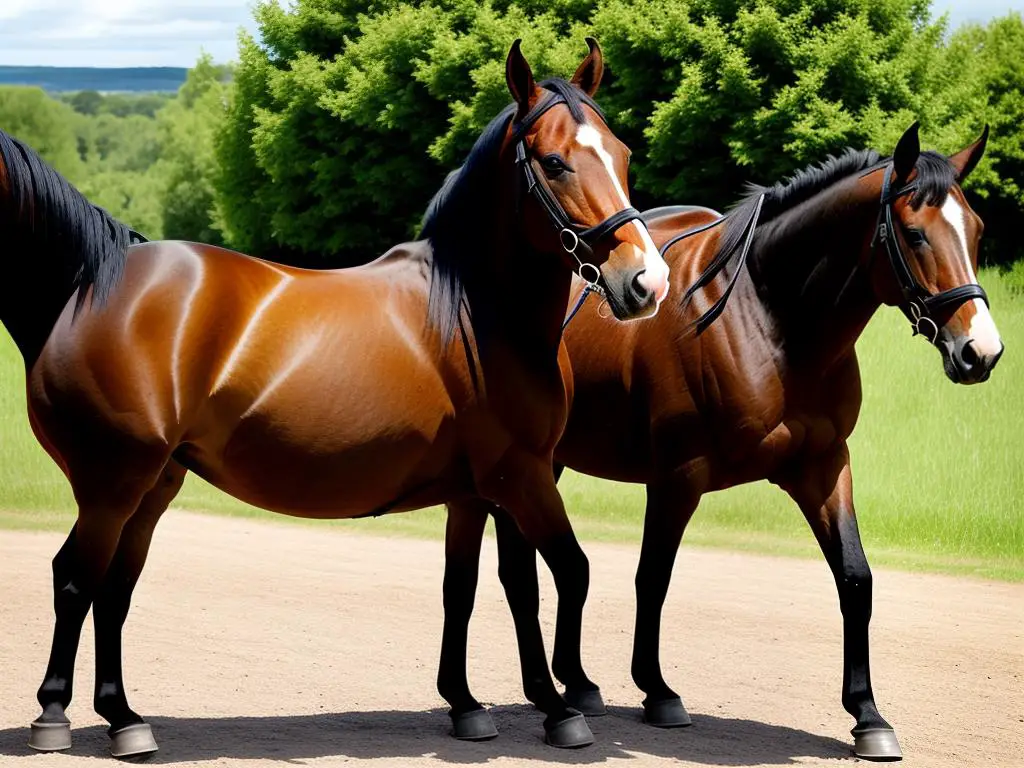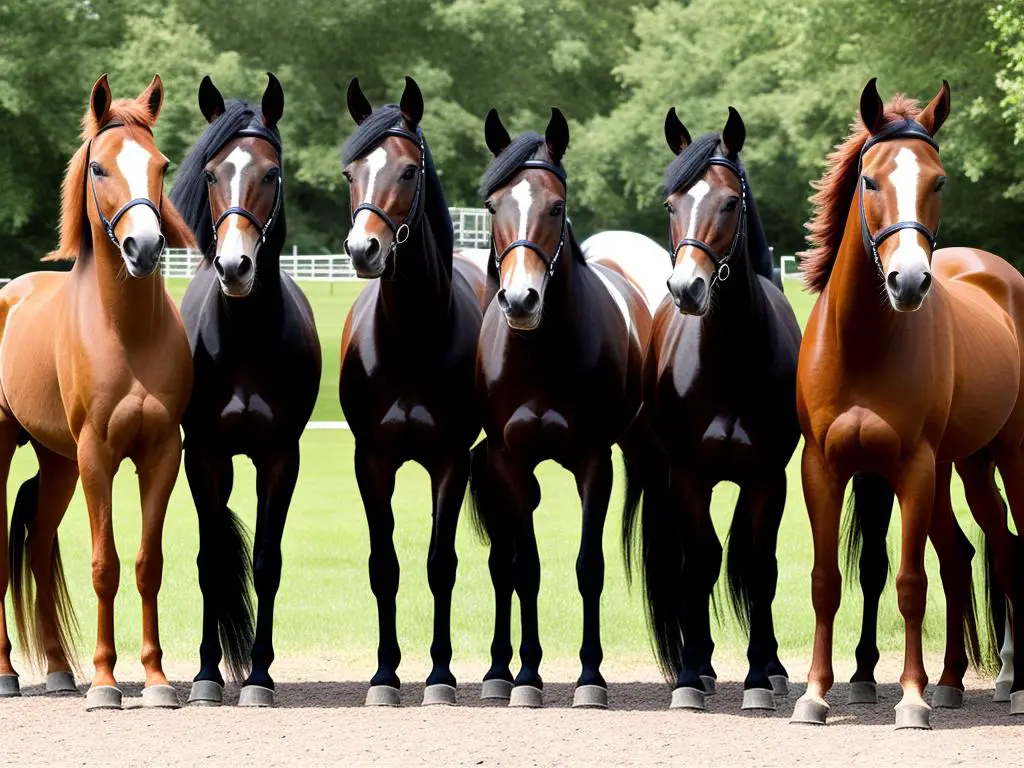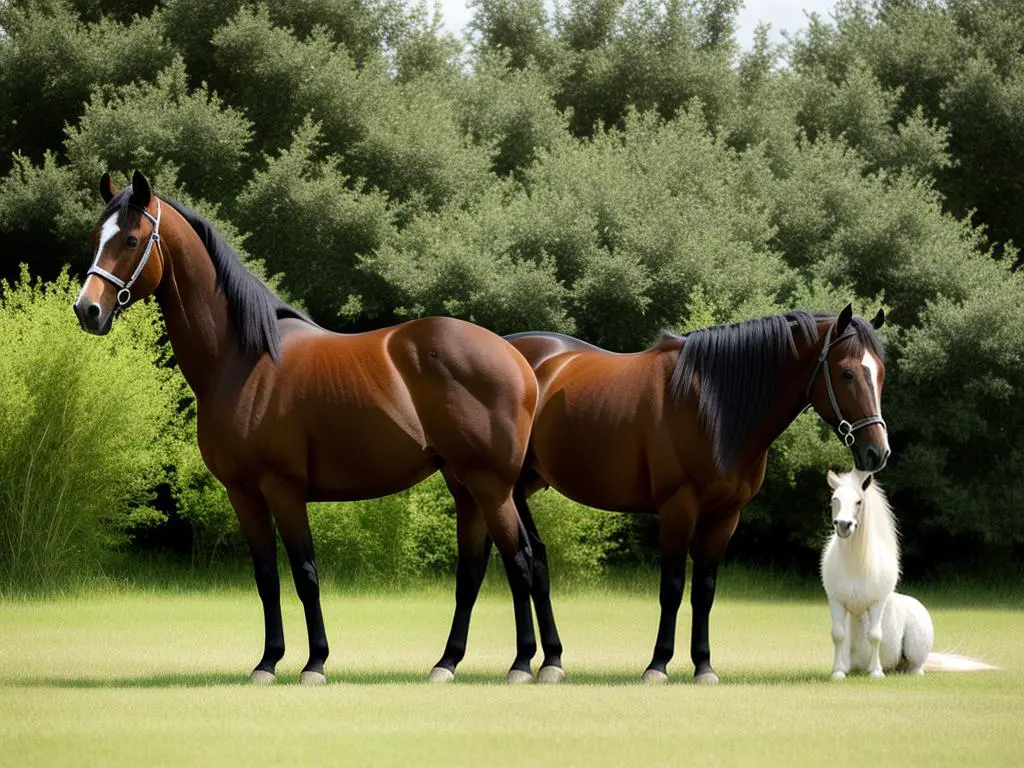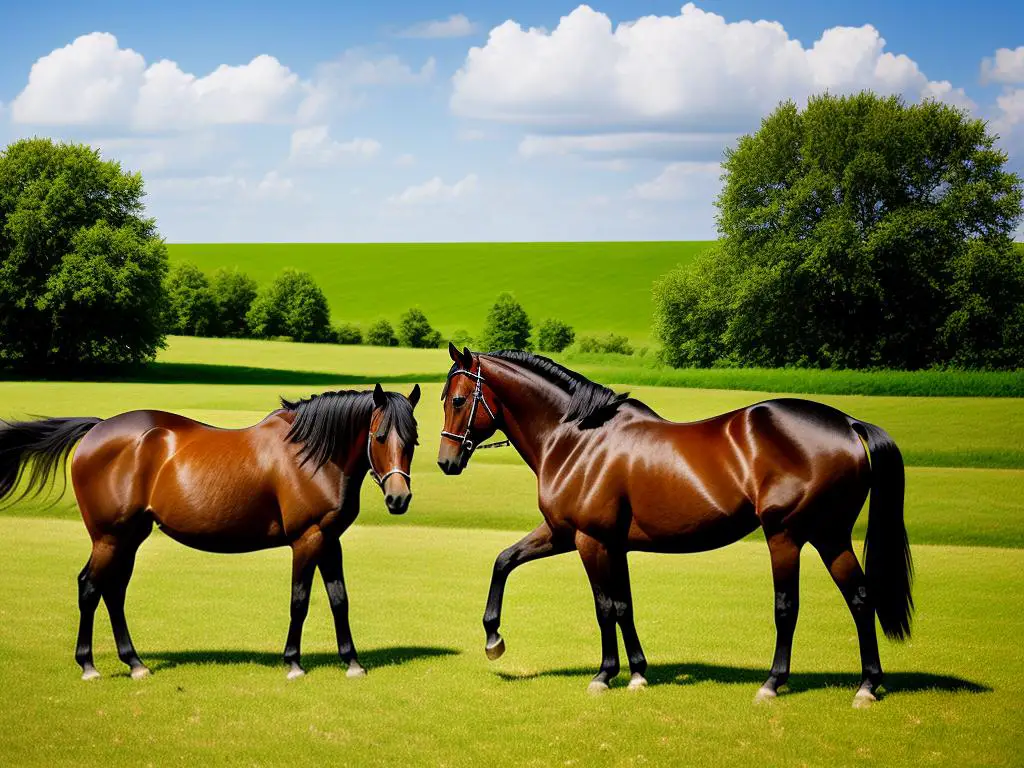France, renowned for its illustrious history and remarkable culture, holds a particular standing in the world of horse breeding as well. A tradition steeped in centuries of expertise, horse breeding in France is an intricate framework of skill, biology, and a deep-rooted passion for equine excellence. This comprehensive overview will navigate you through the evolution of this industry, showcasing the main horse breeds of the country, the meticulous process of breeding, and regulatory standards in place. Engage in the rich tapestry of French horse breeding – an industry shaped by time, individuals’ dedication and scientific advancements, and framed by diverse landscapes from Normandy’s lush pastures to the stony expanse of Provence.
Table of Contents (Horspedia)
History of Horse Breeding in France
The Genesis of Horse Breeding in France
Horse breeding in France has a storied past, tracing back hundreds of years. French horse breeders have always prided themselves on their attention to detail, commitment to quality, and deep understanding of equine genetics. The roots of horse breeding in France can be traced back to the medieval times when war horses, referred to as “Destrier,” were selectively bred for their size and strength.
From Carriage Horses to the Notable Thoroughbred
The 19th century was characterized by industrial growth and increased leisure time. Horses were needed more for luxury pursuits than labor. The breeding focus slowly shifted towards producing versatile, athletic horses leaner and faster horses which could excel in sports and entertainment arenas. The French Trotter, used for harness racing, and the Thoroughbred, integral to the horseracing industry, took center stage.
Breeds That Made a Mark
Several key horse breeds were developed in France and have continuously influenced the global horse breeding industry. The Percheron, a muscular and hardworking breed, was developed for farm work and transportation needs. In contrast, the Selle Francais breed was developed primarily for sport, particularly show jumping and dressage.
Influential Figures in French Horse Breeding
Several figures have influenced the horse breeding industry in France. Count Frederic de Lagrange played an essential role in developing the Thoroughbred breed in France during the 19th century. His horse, Gladiateur, was known as the “French Napoleon” and won the English Triple Crown.
More recently, Marcel Boussac and Prince Aly Khan have significantly influenced the French Thoroughbred breeding industry, producing multiple winning horses that enjoyed successful racing careers.
The Role of Stud Farms
France is home to some of the most renowned stud farms (haras) globally, contributing to the country’s successful horse breeding program. The National Stud (Haras Nationaux) played a crucial role in developing many of today’s recognized breeds.
These stud farms maintain impeccable standards, ensuring the best stallion and mare combinations, optimal living conditions, and top-tier veterinary care.
The Landscape of Horse Breeding in Modern France
Horse breeding in France is a prestigious and thriving industry that has gained global recognition. With over 7,100 active breeders, France asserts its significance as a major exporter of racehorses worldwide. This acclaim does not come unearned—it’s a testament to the meticulous organization, ceaseless commitment to enhancement, and a reverential acknowledgment of the historical legacy and traditions in horse rearing.

Main Breeds and Their Characteristics
Highlights of Esteemed French Horse Breeds and Their Distinctive Qualities
Within the realm of French horse breeding, several breeds are specifically acclaimed for the unique attributes, functions, and inherent traits they possess. These breeds are products of deliberate selection and breeding strategies, each encapsulating its special merits and struggles. Breeders undertake the onus of maintaining these characteristics, ensuring the persisting quality and singularity of each breed.
The Laudable Thoroughbred
Famed for their exhilarating speed and remarkable agility, Thoroughbreds hold a significant place in France’s equine realm. Thoroughbreds impress with their sleek, silky coats and the lean, streamlined body construction. Though primarily intended for racing, their intense vitality and adaptability make them an apt choice for an assortment of equestrian activities.
The Selle Français
The Selle Français is a renowned sport horse breed, developed in France. This breed is characterized by their powerful hindquarters, short backs, and strong legs, making them particularly suitable for show jumping, dressage, and three-day eventing. Their calm and intelligent demeanor adds to their allure as sport horses.
The French Trotter
A breed native to France, the French Trotter is known for its robust conformation and endurance. This breed is used mainly for trotting races, a popular equestrian sport in France. French Trotters are admired for their resilience and staying power on the race track.
The Percheron
Originating from the region of Le Perche, near Normandy, the Percheron is a heavy draft breed. They are known for their impressive strength and hardiness. Percherons were initially bred for heavy draft and farm work, but their majestic appearance and steady temperament have now made them a popular choice for shows and parades.
Breeding Challenges and Solutions
Despite their individual strengths, each breed presents its unique challenges. For instance, Thoroughbreds are susceptible to respiratory and musculoskeletal issues. Selle Français, though versatile, require intense training. French Trotters require optimal conditions for endurance training, while Percherons need a carefully managed diet to prevent obesity.
French breeders mitigate these challenges through meticulous breeding practices. They maintain a balance between preserving each breed’s unique traits and improving their health and performance. Disease screening, personalized care, and a focus on environmental sustainability are some methods adopted by French breeders.
In summary
Horse breeding in France is an intricate process, reflected in the high-quality and diversity of French horse breeds. Each breed is valued for its unique traits and purpose, representing the depth and richness of the nation’s equestrian legacy.

The Horse Breeding Process in France
The Careful Selection of Stallions and Mares
The choice of Stallions and Mares marks a significant beginning in the French horse breeding journey. This process takes into account numerous elements such as their age, lineage, health status, and performance abilities. Breeders often choose those stallions and mares that have demonstrated superior performance in competitions and exhibit a favorable genetic history. Furthermore, comprehensive health checks are performed to ensure their fitness for breeding.
Typically, mares between the ages of four to fifteen are considered optimal for breeding, as this is their prime. Stallions, however, can continue to breed past the age of fifteen, provided they maintain good health and fitness.
Breeding Process
France is known for both its traditional horse breeding methods and introduction of modern techniques. The traditional process involves natural mating where a stallion is introduced to a mare in a controlled environment. While this method may pose risks such as injury to both horses, it is still frequently used due to its cost-effectiveness.
Numerous modern techniques are employed in horse breeding in France as well, such as artificial insemination, and embryo transfer. Artificial insemination allows for wider genetic variation as it permits breeding among horses separated by geographical boundaries. Embryo transfer, although expensive, enables having multiple offspring from a top-performing mare within the same breeding season.
Pregnancy and Foaling
Pregnancy in horses lasts about eleven months. During this period, mares require special care and attention to maintain their health. They typically undergo regular veterinary check-ups to monitor the progress of the pregnancy and to detect any potential complications.
The birth of the foal, also known as foaling, is a crucial phase where the breeder should be on standby to assist if complications arise. Newborn foals stand and nurse within a few hours following birth, and they require careful monitoring during their first few days of life.
Early Stages of a Foal’s Life
The first six months of a foal’s life are crucial for its development. During this time, they transition from a milk diet to grazing and consuming horse feed. They start training to become familiar with being handled, halter training, and even trailer loading.
In France, foals are usually weaned at six months. Weaning is a critical time as it marks the transition from dependence on the mare to independence.
Innovative Practices in French Horse Breeding
France is at the forefront when it comes to adopting ground-breaking techniques in horse breeding. The use of modern approaches like frozen semen and embryo freezing are common.
The application of frozen semen enables breeders to use the sperm from stallions that are no longer available or stationed in different countries. On the other hand, embryo freezing allows for the storage of embryos for future use or for international trading. These practices have substantially enriched both the quality and diversity of horses bred within France.
Further scientific advancements such as genetic testing and genomic selection are employed to comprehend genetic disorders and make informed choices regarding breeding pairs. This ongoing improvement in breeding strategies is a testament to France’s dedication to superior standards in horse breeding.

Regulations, Challenges and the Future of French Horse Breeding
Governing Standards for Horse Breeding in France
The French horse breeding industry adheres to strict regulations overseen by various organizations and government bodies. These entities ensure the maintenance of high-quality animal welfare, accurate record-keeping of pedigrees, and ethical practices. The French Stud Book, the “Société Mère des Anglo-Arabes”, and the Ministry of Agriculture are the key regulatory bodies.
The Ministry of Agriculture has an integral role in overseeing and regulating the transportation and slaughtering of horses, whilst the French Stud Book, under the management of France Galop, is primarily concerned with documenting thoroughbred lineages. Furthermore, the quasi-governmental organization Haras Nationaux offers a range of services from distributing genetic resources, registering horse births, to providing advice to breeders.
Challenges in the French Horse Breeding Industry
The evolving global and domestic market dynamics pose several challenges for French horse breeders. Rising operational costs, notably feed prices, veterinary bills, and transportation expenses, have put pressure on profitability. Changes in consumer demands and market trends further complicate strategies for breeding and selling horses.
Another pressing problem is inbreeding, which can lead to low genetic diversity and associated health issues. These concerns are not unique to France, but they do pose significant challenges for French breeders. A lack of structured data on genealogy also hampers strategizing for genetic diversity.
The Future Landscape of French Horse Breeding
Looking forward, there are reasons to be optimistic about the future of horse breeding in France. Technological advancements offer potential solutions for many current issues. For example, digital genealogy tracking and genetic testing can provide a clearer understanding of a horse’s lineage and potential health issues, giving breeders more insight and control over their breeding programs.
Artificial Intelligence (AI) promises applications that could analyse patterns in genetic and market data to forecast ideal breeding pairs, leading to higher yielding and healthier progeny. Robotics and automation could help in effectively managing farms to reduce operational costs and improve the efficiency of breeding operations.
In terms of sustainability, a growing interest in organic farming methods and an emphasis on animal welfare could lead to a radical overhaul of established breeding practices. Alternative feed sources that are environmentally friendly are being tested, and it’s hoped that this shift will help to mitigate the impact of horse breeding on the environment.

Delving into French horse breeding offers fascinating revelations about the country’s rich equestrian history, the unique attributes of its horse breeds, and the complex processes that go into creating these majestic creatures. The stringent regulations alongside the industry’s challenges and future directions complicate this picture further. Nonetheless, whether inspired by the power and beauty of the creature or driven by an interest in the mechanisms of attainment, the realm of French horse breeding offers a mesmerizing journey. In the ebb and flow of progress and tradition, there’s an undeniable allure that ensures its vitality in years to come, echoing the timeless connection between the French people and their horses.
